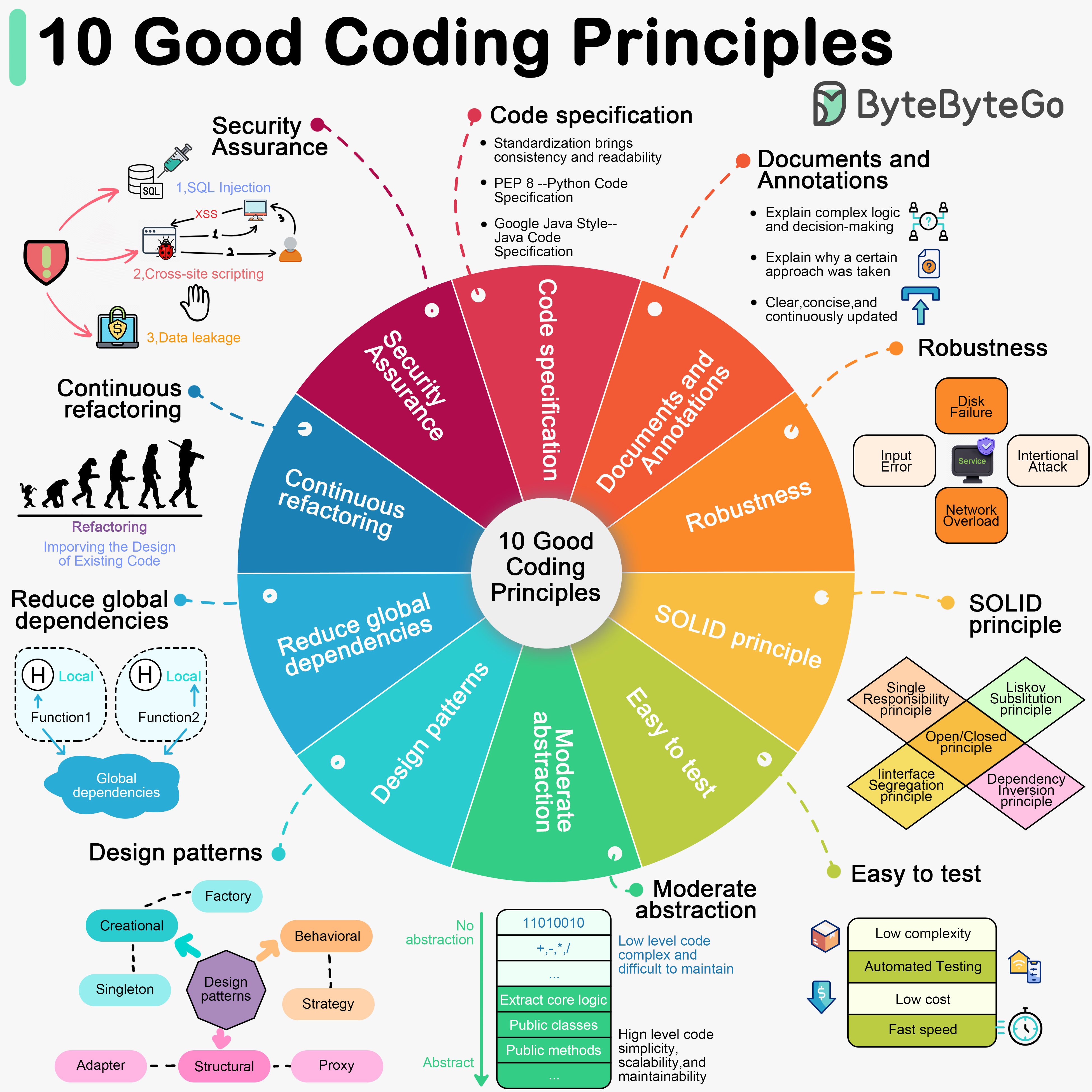Improve code quality with these 10 essential coding principles.

Software development requires good system designs and coding standards. We list 10 good coding principles in the diagram below.
When we write code, it is important to follow the industry’s well-established norms, like “PEP 8”, “Google Java Style”. Adhering to a set of agreed-upon code specifications ensures that the quality of the code is consistent and readable.
Good code should be clearly documented and commented to explain complex logic and decisions. Comments should explain why a certain approach was taken (“Why”) rather than what exactly is being done (“What”). Documentation and comments should be clear, concise, and continuously updated.
Good code should be able to handle a variety of unexpected situations and inputs without crashing or producing unpredictable results. Most common approach is to catch and handle exceptions.
“Single Responsibility”, “Open/Closed”, “Liskov Substitution”, “Interface Segregation”, and “Dependency Inversion” - these five principles (SOLID for short) are the cornerstones of writing code that scales and is easy to maintain.
Testability of software is particularly important. Good code should be easy to test, both by trying to reduce the complexity of each component, and by supporting automated testing to ensure that it behaves as expected.
Abstraction requires us to extract the core logic and hide the complexity, thus making the code more flexible and generic. Good code should have a moderate level of abstraction, neither over-designed nor neglecting long-term expandability and maintainability.
Design patterns can help us solve some common problems. However, every pattern has its applicable scenarios. Overusing or misusing design patterns may make your code more complex and difficult to understand.
We can get bogged down in dependencies and confusing state management if we use global variables and instances. Good code should rely on localized state and parameter passing. Functions should be side-effect free.
Good code is maintainable and extensible. Continuous refactoring reduces technical debt by identifying and fixing problems as early as possible.
Good code should avoid common security vulnerabilities.